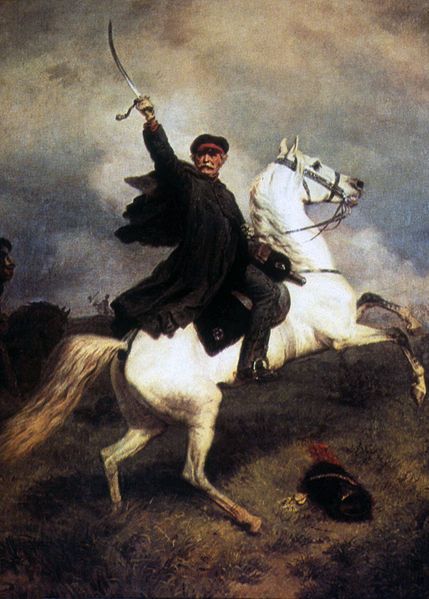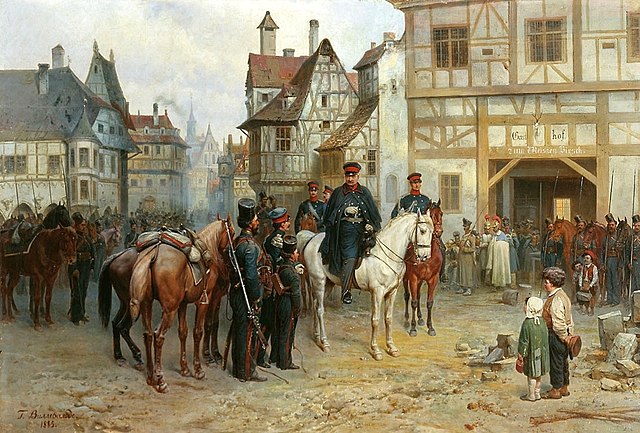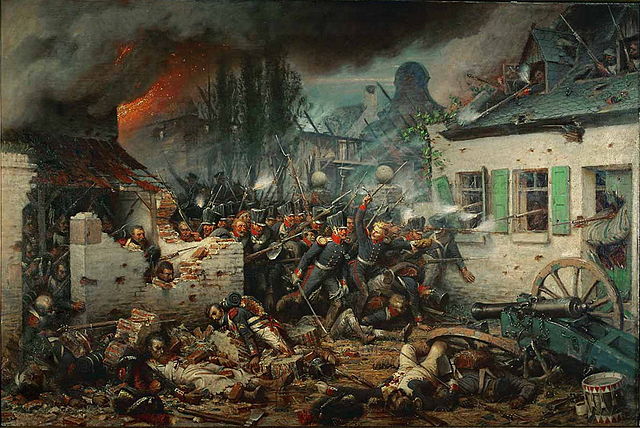The Battle of Ligny, in which French troops of the Armée du Nord under the command of Napoleon I defeated part of a Prussian army under Field Marshal Blücher, was fought on 16 June 1815 near Ligny in what is now Belgium. The result was a tactical victory for the French, but the bulk of the Prussian army survived the battle in good order, was reinforced by Prussian troops who had not fought at Ligny, and played a role two days later at the Battle of Waterloo. The Battle of Ligny was the last victory in Napoleon's military career.
Battle of Ligny, by Théodore Jung
A Prussian officer informs the Duke of Wellington – who was attending the Duchess of Richmond's ball – that the French have crossed the border at Charleroi and that the Prussians would concentrate their army at Ligny.
Ligny by Ernest Crofts (1875). This representation of the battle shows Napoleon surrounded by his staff surveying the battlefield while columns of infantry advance to the front. The windmill is probably that on the heights of Naveau, which served as Napoleon's command post during the battle,
Gebhard Leberecht von Blücher
Gebhard Leberecht von Blücher, Fürst von Wahlstatt, Graf (count), later elevated to Fürst von Wahlstatt, was a Prussian Generalfeldmarschall. He earned his greatest recognition after leading his army against Napoleon I at the Battle of the Nations at Leipzig in 1813 and the Battle of Waterloo in 1815.
Gebhard von Blücher by Ernst Gebauer
Marschall Vorwärts by Emil Hünten (1863)
Gebhard Leberecht von Blücher in Bautzen by Bogdan Willewalde (1885)
The Prussian attack on Plancenoit during the Battle of Waterloo, painted by Adolph Northen







